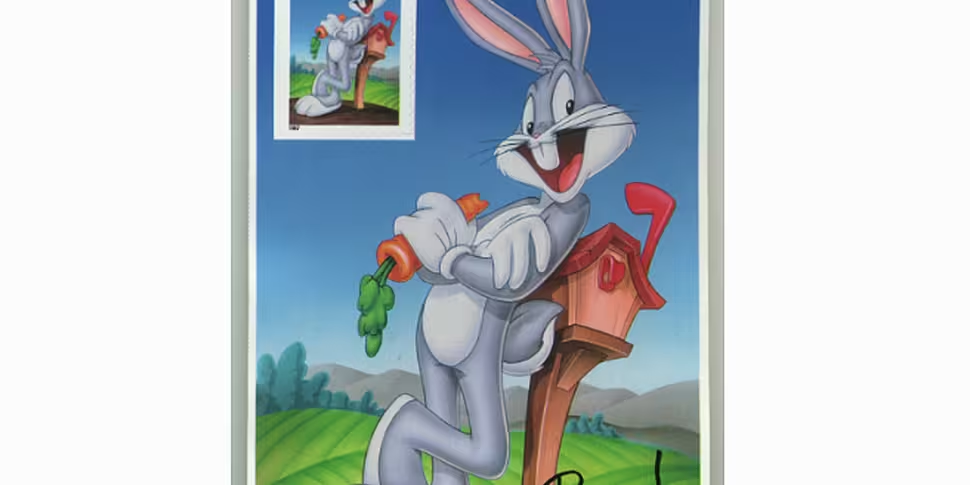One of the 20th Century's most recognisable figures turned 75 on Monday.
Putting the likes of Homer Simpson's 26-year run to shame, Buggs Bunny continues to be just as popular a figure among children and adults as he ever was.
Professor Maria Pramaggiore, Head of the Department of Media Studies at Maynooth University, spoke to George on The Right Hook today about Bugs Bunny and the wider subject of animals in animation. You can listen back below:
The crafty carrot-muncher has changed quite a bit since his debut in 1940, when he was a just an apple in the eye of his creators at Leon Schlesinger Productions - later to become the better known Warner Bros. Cartoons.
The evolution of Bugs Bunny (Wikipedia.org)
As you can see, the physical evolution of Bugs Bunny coincides remarkably with the evolution of man - striding taller and more upright as he further removes himself from the primordial ink.
Voiced by the 'man of a thousand voices' Mel Blanc (who, contrary to rumour, was not allergic to carrots), an unnamed Bugs appeared in Porky's Hare Hunt (1938) as a foolish country yokel. It was not until the following year that 'Bugs' stuck, and the year after - in 1940 - that A Wild Hare, considered the first official Bugs appearance, was released.
During this period he acquired his famous catchphrases - 'what's up Doc?' and 'Of course you realise, this means war' - the latter borrowed from Groucho Marx's Duck Soup.
Featuring the first bout in the rabbit's endless battle of wits with hunter Elmer Fudd, the cartoon is much closer to the wily Bugs that has become a cultural icon.
Bugs was sadly not immune to the prejudices of his day, and a number of early cartoons feature Bugs in blackface, or setting him against blatantly racist depictions of black people in the southern US.
Another cartoon, owing to the US' role in World War II, shows Bugs taking on slant-eyed Japanese caricatures, in what is fairly regarded as a piece of outright war propaganda.
But following the war, Bugs was a highlight of America's golden age of animation, appearing in 167 short films. And though Bugs never lost the common touch, he never shied away from the high-brow either.
What's Opera, Doc? (directed by the legendary cartoonist Chuck Jones) a combined parody of the works of 19th Century German Richard Wager, contemporary ballet and Disney's Fantasia, is widely considered to be one of the best cartoons ever put to celluloid
Another opera parody - The Rabbit of Seville - also ranks among the best of Looney Tunes' offerings.
After taking a break from the screen between 1964 and 1976, a resurgent Bugs took parent in countless shorts and children's shows from the late 70s through to the 90s, even appearing in the classic Who Framed Roger Rabbit, which was his last appearance before the death of Mel Blanc.
Undeniably though, his most important big-screen role was in the live-action/animation Space Jam (1996), starring alongside Michael Jordan, the most famous sportsperson on the planet. While admired more by children than critics, the movie racked up an impressive $200m at the box office,
The film also introduced a new love interest for Bugs - Lola Bunny. Previously, most female characters were in fact Bugs donning drag to get one over on an antagonist.
And if anyone had a doubt that Bug's career outshines his great rival Mickey Mouse, the US Postal Service has decided the matter. In 1997 the rabbit was given his own postage stamp - the first cartoon character to ever receive one.

(flickr.com/photos/contusion)
Despite only a few years of respite in a widly successful 75 years, Bugs remains as fresh a character as ever, and continues to star in a number of Cartoon Network shows, ensuring the next generation will be just as keen on the wascaly wabbit's antics as the last.










